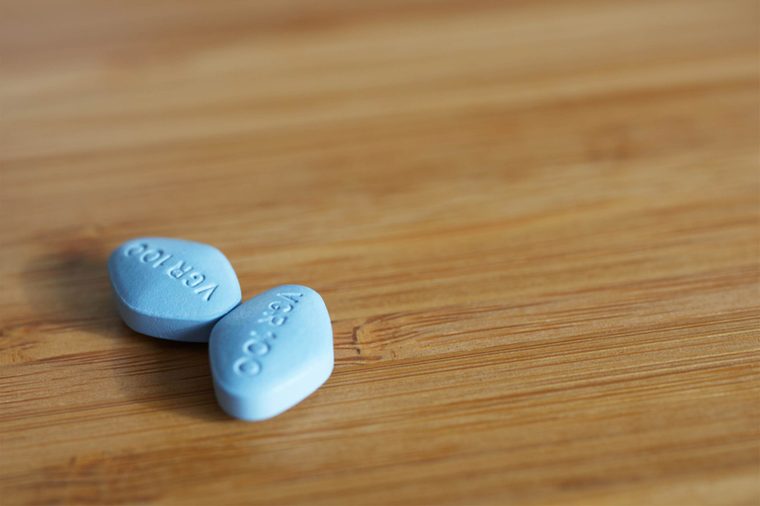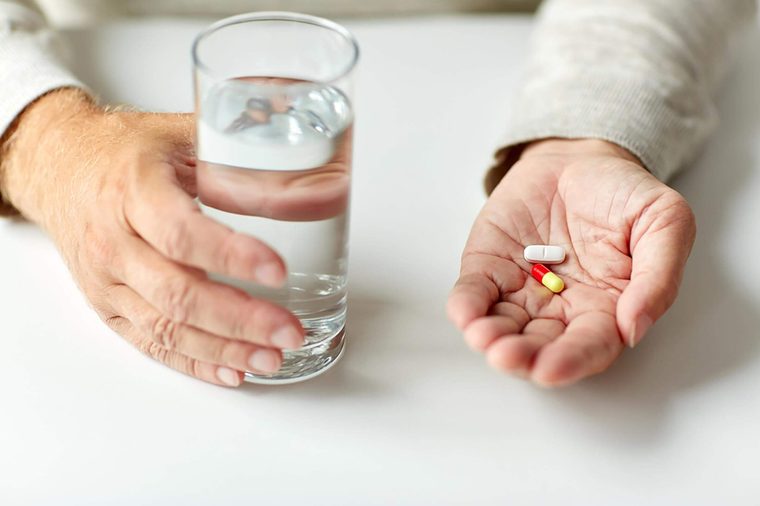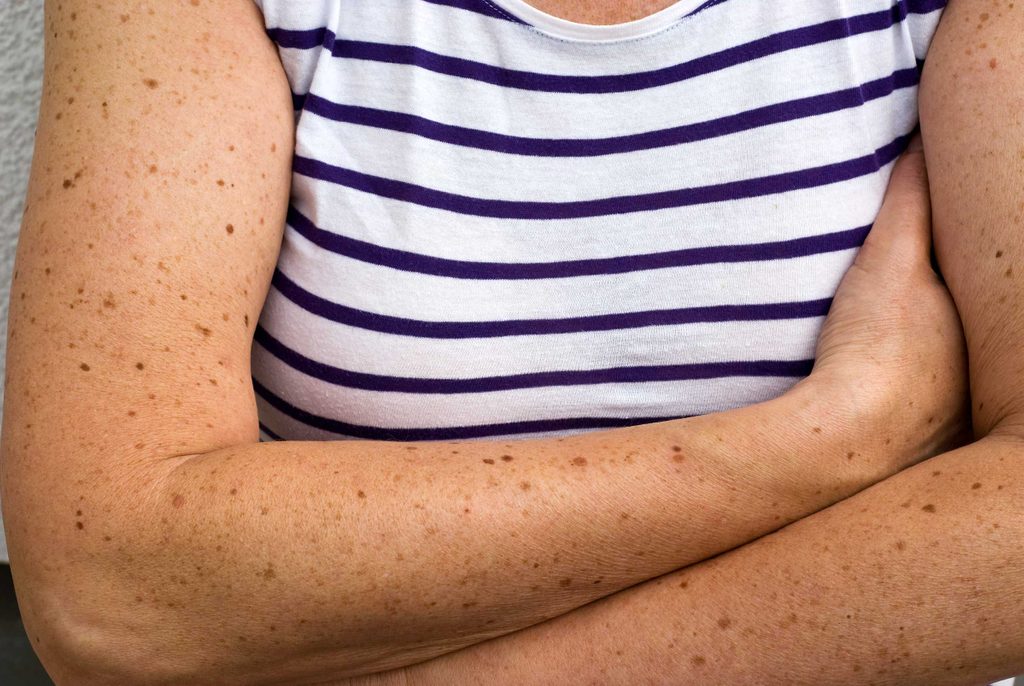
You start your day with OJ
Some sour news for citrus lovers: People who consumed citrus, like orange juice or a grapefruit, at least once a day had a 36 percent higher skin cancer risk compared with those who consumed citrus fewer than two times a week, according to a study in the Journal of Clinical Oncology, which followed more than 100,000 adults for 25 years. Citrus foods contain compounds that make skin more photosensitive. But there’s no need to reduce your intake, says lead researcher Abrar Qureshi, MD, MPH, chair of the department of dermatology at the Warren Alpert Medical School of Brown University—just reduce your sun exposure, especially in the few hours after eating citrus. These are strange reasons you got sunburned without realizing it.

You take Viagra
Men who used the drug were 84 percent more likely to develop melanoma over a period of ten years in one JAMA Internal Medicine study. More research is needed to prove a connection, but men over 50 are more than twice as likely as women to develop and die from skin cancer whether they use Viagra or not—so they need to be especially vigilant about sun protection.

You worship the sun on your yearly getaway
Intense, intermittent sun exposure, the kind that frequently leads to sunburn on beach vacations, seems to increase the risk of melanoma more than regular exposure—say, the 15 minutes you’re outside running errands during the day. That daily time in the sun isn’t without consequence; cumulative sun exposure is linked to non-melanomas like basal cell carcinoma, a less lethal form of skin cancer. However, there’s something about sudden blasts of UV radiation that seems to overwhelm the skin’s defenses against melanoma. These sunscreen myths make dermatologists cringe.

You’re being treated for an autoimmune disease
When your immune system is weakened, your skin cancer risk can skyrocket. That’s a concern for the 50 million Americans with rheumatoid arthritis (RA), lupus, Crohn’s disease, and other conditions that cause the body to attack itself. The immune-suppressing drugs used to treat these ailments can worsen the problem. For example, TNF inhibitors, medications taken by people with RA, raised the risk of melanoma 50 percent in one study. People who took immunosuppressant drugs called thiopurines to control IBS were more prone to non-melanoma skin cancer in two studies. It’s a real problem, says Mona Gohara, MD, an associate clinical professor of dermatology at Yale University School of Medicine. The solution: “Skin cancer is easily treated if caught early, so be sure to do monthly self-checks and see your doctor every six months or as recommended for a skin exam,” says Dr. Gohara. These are the important facts you don’t know about skin cancer.

You drink more than one alcoholic beverage a day
A recent analysis of 16 studies found that imbibing in excess of one daily cocktail on a regular basis increases the risk of melanoma 20 percent, possibly because compounds in alcohol make skin more sun sensitive. Of course, being under the influence can also make you more careless about sun protection: Those who consumed more than four cocktails or a few strong beers a day had up to a 55 percent increased risk of melanoma.

You count more than 11 moles on your right arm
Women with that many moles were nine times more likely to have over 100 moles scattered across their whole body, a known risk factor for melanoma, say researchers at King’s College in London. This is what to look for when checking your skin for moles.

A long commute
Early research suggests drivers might be getting too much sun time behind the wheel. One study in the Journal of the American Academy of Dermatology found that more skin cancers occurred on the left side than the right, especially among men. Dermatologists think the gender difference might be related to gender differences while driving. Windshields are designed to filter out all UV radiation, but side windows allow UVB rays in. Dermatologists think that sun damage can add up over time, so slather on sunscreen before a road trip. Don’t miss these sneaky skin cancer spots (that aren’t even on your skin).

Ski trips
The sun might be strongest in the summer, but that’s no excuse to skip the SPF when the temperature drops. Any type of sun exposure increases your history of UV exposure, and snow bunnies might get more damage than they bargained for. Up to 80 percent of UV rays can still make it through thin clouds, and snow reflects about 75 percent of rays, meaning you’re exposed to more.

Belief that dark skin is safe
While it’s true that dark skin is less vulnerable to skin cancer, it isn’t immune. In fact, a study of almost 97,000 melanoma patients found that skin cancer rates were highest for white patients, but diagnoses were more deadly among people of color. Experts believe non-white patients are less likely to take protective measures or go to the doctor for a skin check, under the assumption that their skin color is protection enough. Don’t miss these other 50 rampant cancer myths that need to die.